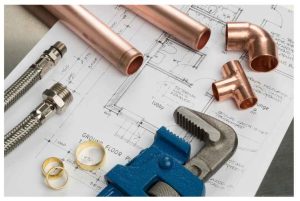Have you ever felt unsure about how to wind a garage door spring for a repair? You’re not alone. Many homeowners face garage door spring repair challenges, but this article is here to help. We’ll guide you through the process, step by step, making it easier and safer.
You’ll learn how to prepare the door for repair, identify the torsion spring system, and safely release tension before you start. Understanding these steps is crucial for effective garage door spring repair. With these instructions, winding and repairing your garage door spring can be manageable. So, let’s dive into garage door maintenance and get to it!
Easiest Method to Wind Garage Door Springs?
Winding a garage door spring might seem daunting, but it’s a task you can manage with the proper guidance.

This article walks you through each step, ensuring safety and efficiency.
Step 1: Preparing the Garage Door
Start by securing the garage door in place. Please close the door and use C-clamps or locking pliers on the tracks to prevent it from moving. This step is crucial for your safety.
Read More:- The 5 Best Garage Door Repair Services in Winnipeg
Step 2: Identifying the Torsion Spring System
Identify the type of spring system you have. Torsion springs are located above the garage door and are wound around a metal shaft. Recognizing your system type is critical to correct winding.
Step 3: Releasing Tension from the Spring
Carefully release the tension from the existing spring using winding bars. Insert them into the winding cone and slowly unwind the spring, maintaining control at all times.
Step 4: Remove the Old Spring
Once the tension is released, you can remove the old spring. Loosen the set screws on the spring and slide it off the bar. Be cautious, as parts may still be under slight tension.
Step 5: Installing the New Spring
Place the new spring onto the shaft. Ensure it’s correctly positioned and the winding cone is appropriately set. Attach the spring to the center bracket as well.
Step 6: Winding the Garage Door Spring (If Necessary)
Wind the new spring using winding bars. Typically, this requires about 30 quarter-turns for a standard 7-foot door. Keep count of your turns for precision.
Step 7: Testing the Garage Door
After winding, carefully remove the clamps and test the door. It should open and close smoothly. If it feels off-balance, you may need to adjust the spring tension.
Read More:- How to Check Garage Door Spring Tension?
Tools and Materials Needed
For winding a garage door spring, ensure you have these essentials:

- Winding Bars: For safe torsion spring adjustment.
- C-Clamps or Locking Pliers: To keep the door stationary.
- Adjustable Wrench: For adjusting set screws.
- Correct Torsion Spring: Ensure it’s the right size for your door.
- Safety Goggles and Gloves: For eye and hand protection.
- Sturdy Ladder: Needed for accessing higher springs.
Having the right tools is crucial for a safe and effective job.
Safety Precautions
When winding a garage door spring, prioritize safety with these critical steps:

- Wear Safety Gear: Use goggles and gloves for protection.
- Secure the Door: Clamp the door firmly to prevent movement.
- Correct Tools: Use specific winding bars for torsion springs.
- Safe Positioning: Stand to the side, not in the spring’s path.
- Careful Tension Handling: Adjust tension slowly and cautiously.
- Seek Professional Help: If unsure, consulting a professional is safer.
Adhering to these precautions minimizes risks and ensures a safer task.
Conclusion
Winding a garage door spring requires patience and attention to detail. By following these steps, you can ensure your garage door operates safely and efficiently. Remember, safety is paramount, so take your time and don’t hesitate to seek professional help if needed.







